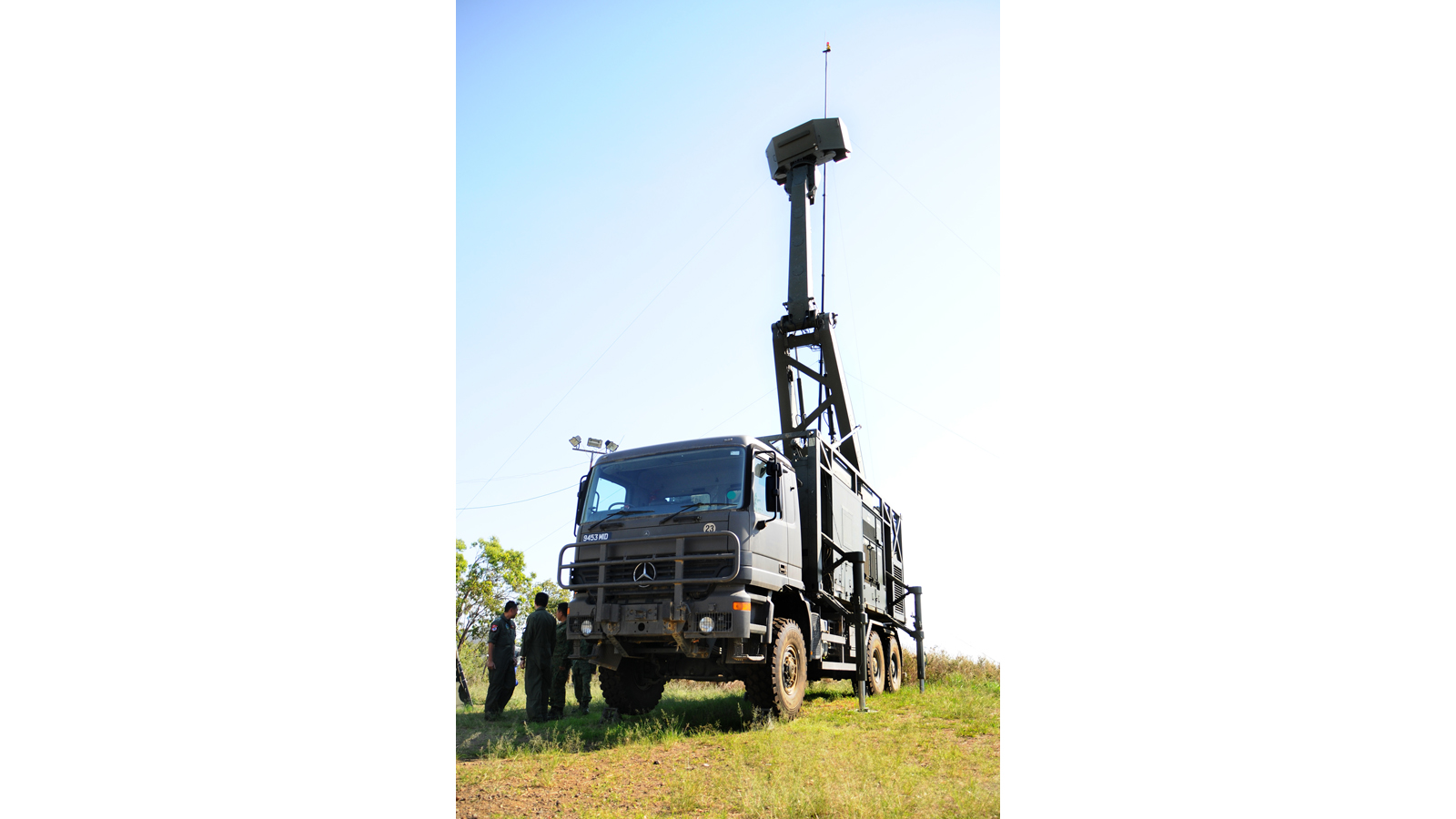- Home
- About us
- History
- History of the RSAF
- 2007/04 - Networked Air Defence
2007/04 - Networked Air Defence
Improved-Homing All the Way Killer (I-HAWK)
Mechanised Igla
Giraffe Agile Multiple Beam
2007
In April 2007, the RSAF unveiled the Networked Air Defence system, an enhancement to the RSAF’s air defence capabilities with new platforms and networking technology. By retaining the robustness of the traditional multi-layered air defence shield, responsiveness and precision were enhanced through tight integration with individual weapon systems. The Giraffe Agile Multiple Beam radar, Upgraded Improved-Homing All the Way Killer (I-HAWK), and Mechanised Igla were also introduced to improve the Networked Air Defence system’s range and response to aerial threats.

A diagram showing how different platforms and weapons are linked in the Networked Air Defence system.

The Mechanised Igla's Weapon Fire Unit (centre) and other Integrated Fire Units.

The upgraded I-HAWK provides low-to-medium-level air defence as part of the Networked Air Defence.

The Giraffe Agile Multiple Beam Radar provides low-level air surveillance in the Networked Air Defence.
“We have built up a robust multi-layered, multi-spectrum air-defence capability, but most of the systems are old so we will look to replace them individually in the sense that each system that we introduce will be more capable. At the same time, however, we are going to build a much better network that will allow us to use the sensors and shooters in a more networked way.”
MG Ng Chee Khern, Chief of Air Force, 2008 on air defence as a continuous work in progress
“By networking an array of existing and new sensors, together with advanced weapon and command and control systems, the Networked Air Defence system greatly enhances the air situation picture and enables faster, more effective response to any aerial threat. A networked system is also faster and more robust…For instance, an airborne threat can be picked up by more than one sensor and assigned to the most appropriate shooter…Other sensors and shooters in the system will also continue to deal with the threat, even if one sensor or shooter is damaged.”
Teo Chee Hean, Minister for Defence, 2007 during his speech at the Networked Air Defence demonstration
“The old shoulder-launched system is very simple, while the new system brings a lot more advanced technology to give us more awareness and responsiveness in battlefield integration.”
CPT (NS) Tan Boon How, Battery Commander, 6 Divisional Air Defence Artillery Battalion, 2007 on the sophistication of the Mechanised Igla
.png)